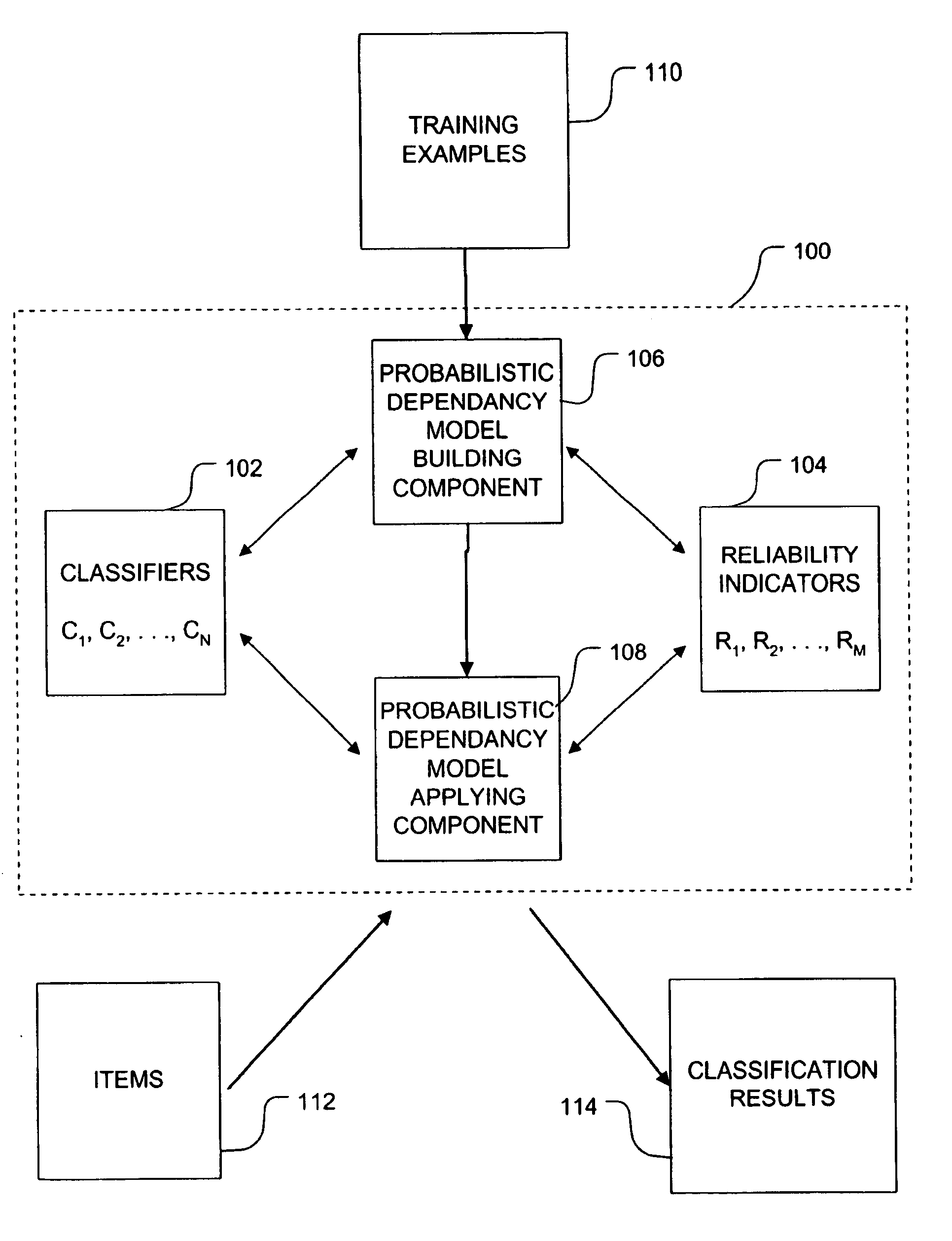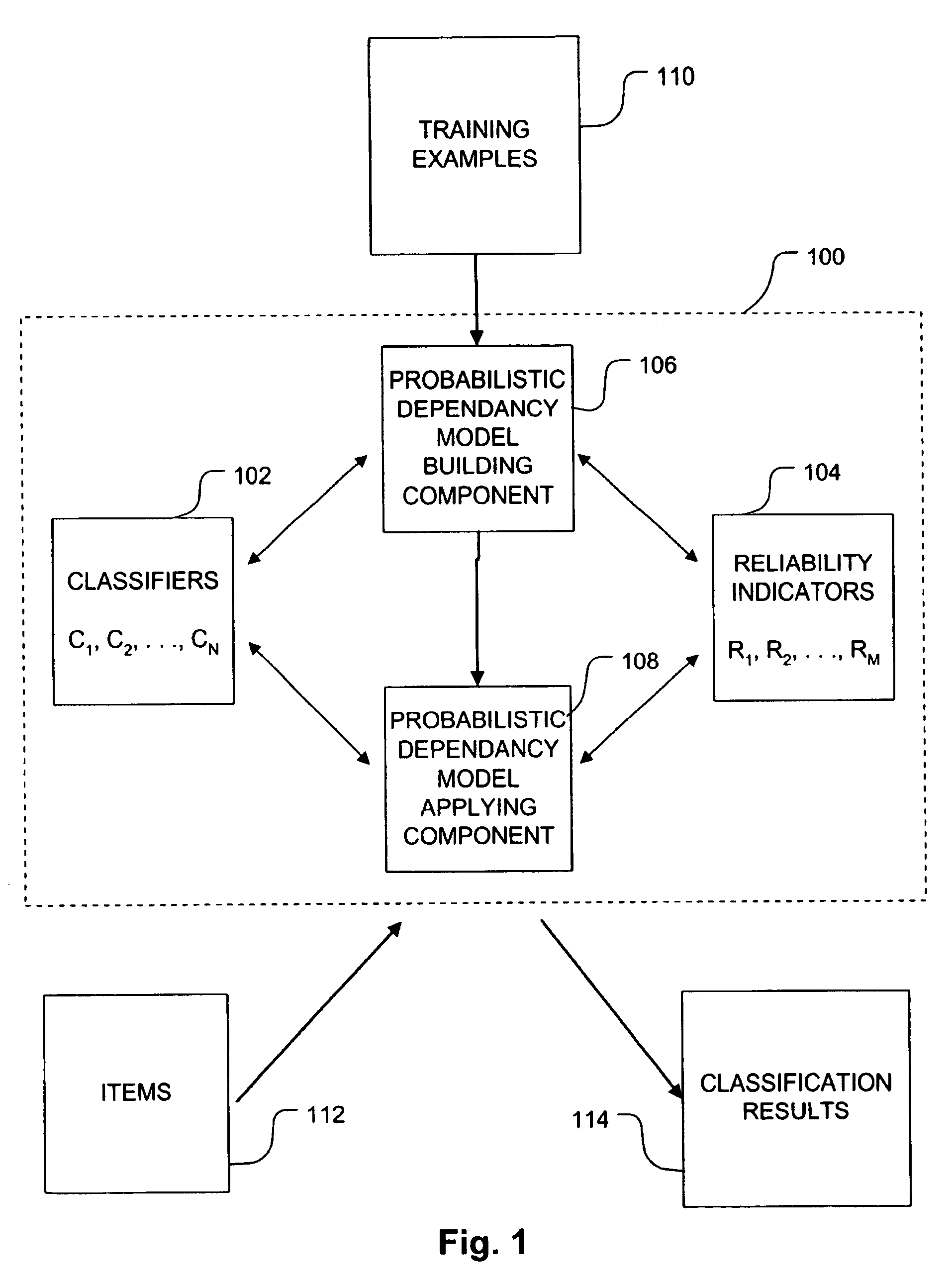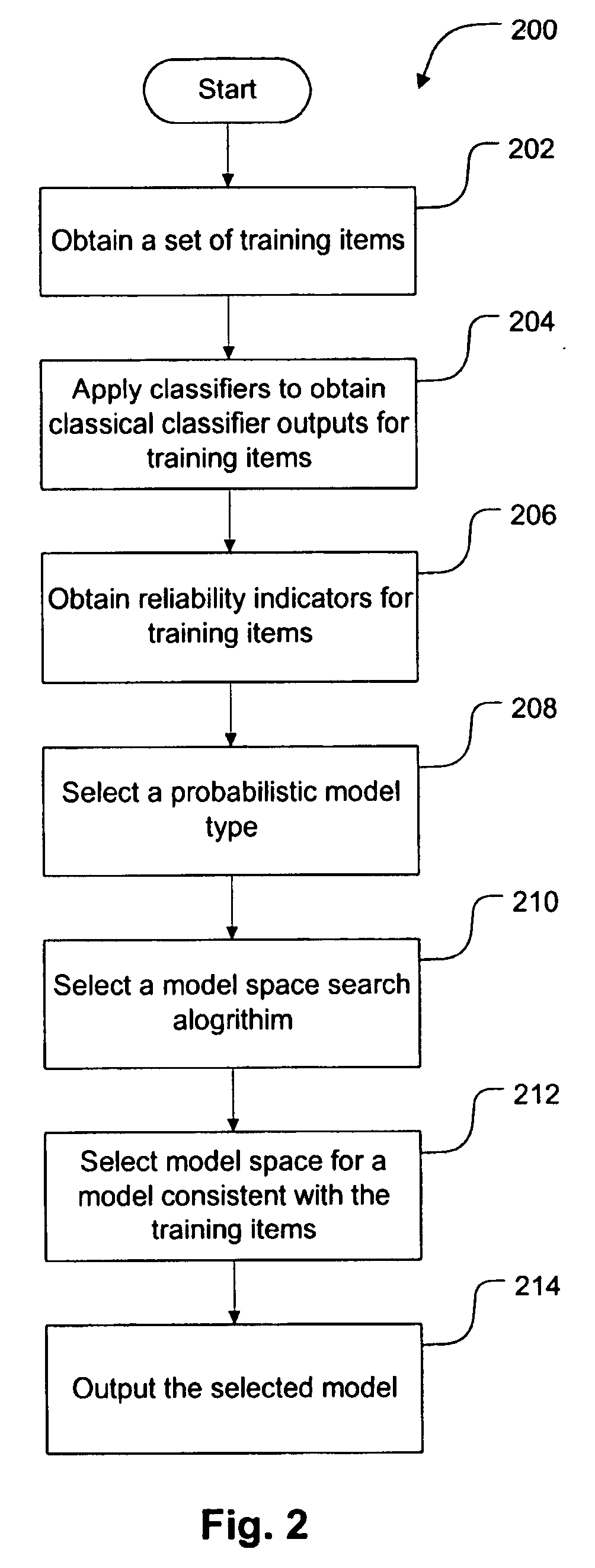Probablistic models and methods for combining multiple content classifiers
a classifier and content technology, applied in the field of information management, can solve the problems of unsatisfactory needs for meta-classifiers or other classifiers, no classifier provides correct classification, and many mistakes of meta-classifiers, and achieve the effect of substantial computational savings
- Summary
- Abstract
- Description
- Claims
- Application Information
AI Technical Summary
Benefits of technology
Problems solved by technology
Method used
Image
Examples
Embodiment Construction
[0023]FIG. 1 is a high level schematic of a computer system 100 provided by the present invention to facilitate item classification, identification, and / or utilization. System 100 includes a component 102 implementing classifiers C1, C2, . . . , CN, a component 104 implementing reliability indicators R1, R2, . . . , RM, a probabilistic dependency model builder 106, and a component 108 implementing probabilistic dependency models produced by model builder 106.
[0024]Probabilistic dependency model builder 106 employs training data 110 to formulate and train probabilistic dependency models. Model builder 106 combines evidence in the form of outputs from one or more classifiers and zero or more reliability indicators. Where the outputs of one or more classifiers and one or more reliability indicators are not predictive of the correct classification or are redundant with other evidence, model builder 106 can drop them from the model. Thus, probabilistic dependency models that are produced...
PUM
 Login to View More
Login to View More Abstract
Description
Claims
Application Information
 Login to View More
Login to View More - R&D
- Intellectual Property
- Life Sciences
- Materials
- Tech Scout
- Unparalleled Data Quality
- Higher Quality Content
- 60% Fewer Hallucinations
Browse by: Latest US Patents, China's latest patents, Technical Efficacy Thesaurus, Application Domain, Technology Topic, Popular Technical Reports.
© 2025 PatSnap. All rights reserved.Legal|Privacy policy|Modern Slavery Act Transparency Statement|Sitemap|About US| Contact US: help@patsnap.com



